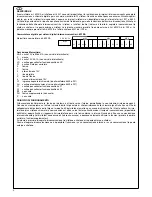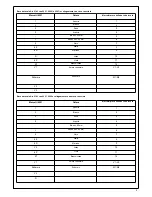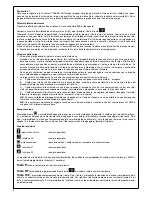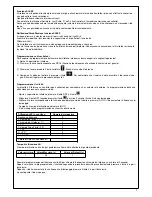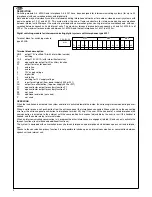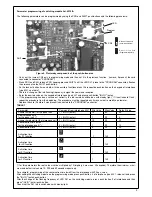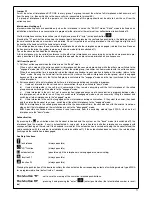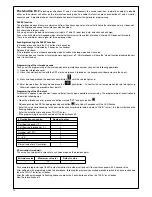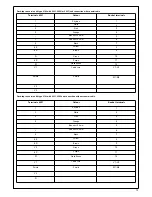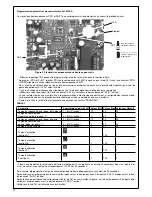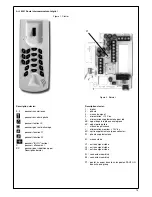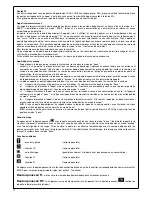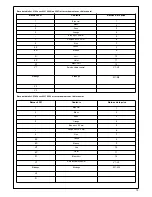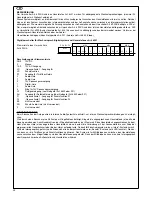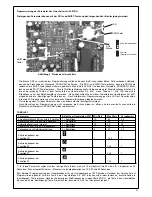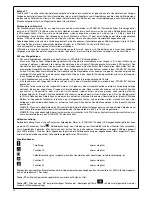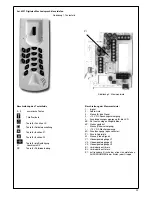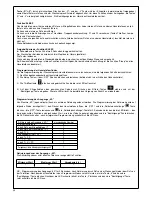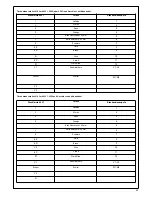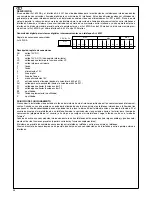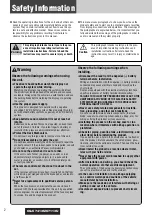
11
Jumper P1
It must be cut on all interphones BUT ONE in every group. For group is meant the whole of all interphones which answer a call
from the panel, i.e. those which have the same call wire (connected to terminal 6E).
If a group of interphone had all the jumpers cut, the interphones of this group should not be able to hear the call from the
entrance panel.
Intercommunicating call
Intercommunicating calls are possible only when the interphone is set on the "BASIC" mode. "Basic" mode is defined as an
installation where there is no conversation in progress (either internal either external) nor selfactivation (led switched off).
Dial the interphone number to be called (max 8 digits) and press the "Invio" (enter) push-button
.
Pressing the "R" push-button or hooking the handset again before pressing the confirmation push-button, the dialled push-but-
tons are cancelled and a new number can be dialled. If a call is routed to an existing interphone, this will ring and a light ton will
be heard on the handset until the handset gets raised.
If the called person answers the conversation is established and all other interphones are engaged (red led lit and call tone on
the handset), otherwise the system remains on the basic mode (all leds switched off).
To end the conversation hook the handset again.
A third interphone may be called (conference) while other two interphones are conversing by using the same procedure pre-
viously described. If there is a conference among three people, the audio volume diminishes as a consequence.
Call from the panel
1 - Call from entrance panel when the sistem in on the "basic" mode
When a call is made by the entrance panel, all interphones of the concerned group ring, while the others are switched to the
"engaged" mode (led lit). The first interphone (within the called group) to answer can communicate with the entrance panel.
When the conversation time is expired or when the interphone handset in conversation is hooked, the system returns to the
"basic" mode. If during the time dwell for the answer the visitor calls another interphone of other group, which is engaged
because of the previous call, the first called group is switched to the "engaged" mode and the line is switched to the latest
called interphone.
2 - Entrance panel call to an interphone while there is a intercommuicating conversation in progress.
a)
Users not interested in the call and not in conversation: they are switched to "basic" mode.
b)
Users not interested in the call, but in conversation: they remain conversing until the first interphone of the called
group answers switching all the others to the "engaged" mode.
c)
Users interested in the call, but not in conversation: (engaged because of a conversation in progress between other
two interphones): when there is a call they are switched to "disengaged" mode and can answer by lifting the handset and
switching all other interphones to the "engaged" mode.
d)
Users interested in the call, but engaged with an intercommunicating conversation: if they want to answer, they hook
and then raise the handset to answer switching all the other interphones to the "engaged" mode.
N.B.
If no interphone in the called group answers within the answer dwell time, the conversation with the external is not pos-
sibe and all the interphones on the installation are set to the "disengaged" mode.
N.B.
A possible unattended answer causes a reset command from the switching module type 6935/A, which sets all
interphones to the "basic" mode.
Autoactivation
By pressing the
push-button when the handset is hooked and the system on the "basic" mode (led switched off), the
interphone (and the monitor if any) is autoactivated. A very quick tone is heard and all other interphones are engaged with
consequent flashing oh the red led. If the handsed is raised (or if the autoactivation is carried out being the handset raised) the
audio connection with the external is established (red led switches off). If the autoactivation does not occur, the red led stops
flashing and the installation is disengaged.
Auxiliary functions
lock release
(always possible)
"LS" function
(always possible)
autoactivation
(possible only if the interphone is not engaged or communicating)
function F1
(always possible)
function F2
(always possible)
Pressing the push-button of the desired auxiliary function activates the corresponding outputs of switching module type 6935/A
for a programmable time (default value: 1 second).
Push-button "R"
: set to zero the memory of the numerical pressed push-buttons.
Push-button RP
: pressing it and pressing the "enter"
(enter) push-button (the latest dialled number is recal-
led).


